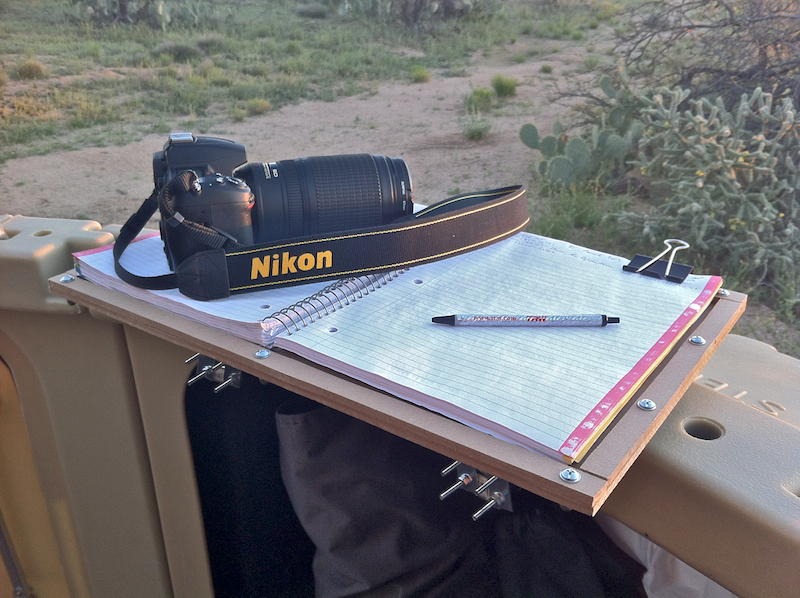
M95 Galaxy Supernova SN 2012aw & Spectrum
Posted: 22 March 2012
The observatory was opened Wednesday, 21 March 2012, at 1806 MST, 75°F. First I viewed Venus, then Jupiter, at 77X. Then I viewed this neighbor as sunset approached:

Since making my POD Roller Desk, I have used it every clear night while in the observatory. During the design, I was worried about the stability of the desk, but I have come to trust it as the desk has proved to be very stable. I now even feel comfortable placing my DSLR on it:

At 1848 MST, viewed Jupiter, 77X; all four Galilean Moons were visible. After preparing the D7000 DSLR for the night's imaging, I viewed Mars at 77X and 206X. Seeing was not good; only the small brilliant North Polar Cap was visible.
I slewed the 8" LX200-ACF telescope to the M95 galaxy in Leo at 1911 MST. I planned to image Supernova SN 2012aw for a longer exposure than I did on the previous session. At 1927 MST, the galaxy became faintly visible and at 1928 MST, the supernova was visible at 77X even though twilight had not yet ended. I mounted the D7000 DSLR at prime focus of the 8" telescope using an Off-Axis Guider and at 1952 MST, I did a focus test exposure of the star Regulus using the Bahtinov Mask. Then went back to M95, and after two framing test exposures, I had located a good guide star. At 2015 MST, I began the long exposure. This is the guided, 15 minute, ISO 5000, cropped image of M95; the arrow points to the supernova:

I then set up to try to capture the spectrum of SN 2012aw using the "Star Analyzer" with the D7000 DSLR at prime focus of the 8". First, I did a focus test of Regulus, Spectral Type B7, with the Star Analyzer. This is its spectrum:
![]()
I then did several exposures of M95 at various lengths in the hope of getting the supernova spectrum. The supernova is currently about Magnitude +13, so this would be the faintest star I have tried with the Star Analyzer. The best image was an unguided, 2 minute, ISO 6400, exposure. During post-processing I had the challenge of identifying the supernova's spectrum from all the others in the image. I used the 15 minute exposure of M95 to match stars in the spectra image. This cropped image is the same orientation as the spectral image below it:


The galaxy is in the lower left corner of the above image; SN 2012aw is the faint star above the galaxy. The galaxy's fuzzy spectrum is near the center of the image. The supernova spectrum (marked) is above the fuzzy galaxy spectrum. This is the processed image of the supernova SN 2012aw spectrum:
![]()
Unfortunately, at ISO 6400, there was a lot of noise in the raw image, so many of the lines may be artifacts. I will attempt to acquire a better spectrum on a future session.
I ended imaging at 2121 MST, and viewed Mars, 77X and 206X. Seeing was still not good.
Closed the observatory at 2135 MST, 48°F.
Comments are welcome; use the Comments section below, or you can Email Me. Thanks.
Go to the previous report.
Return to the Cassiopeia Observatory Welcome Page.